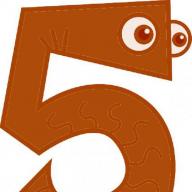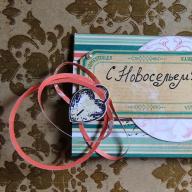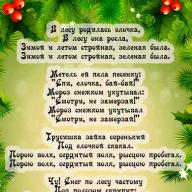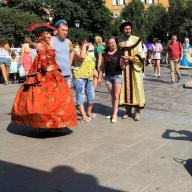Autumn has come, the leaves have turned yellow and are falling, everything is getting ready for winter. But not everything is so sad.
Autumn is also a time for walks in the forest, a time to collect dry twigs, cones, acorns, beech seed boxes, straws, as well as other gifts of nature, you can't list everything. For what? Guess three times.
Today on the agenda autumn craft hedgehog, the natural materials that we have collected during our hikes in nature are just right for creating a thorny forest dweller.
I will only give you ideas on how you can make a hedgehog. They are suitable even for crafts at school, for primary grades, I think that such an activity will be interesting for adults too!
You can come up with any basis for our animal, from foam plastic to paper or made of papier-mâché. We will attach the muzzle and needles to it.
How to make a hedgehog - a few ideas
And I love hedgehogs
I'm sticking out of hedgehogs
I am a hedgehog from a hedgehog
Even if they were three rubles.
Remember the crafts of animals as a child? The base can be made of plasticine, needles - sunflower seeds, buckwheat, pasta, twigs, whatever! Or take a potato, cut where necessary, stick with toothpicks. It was often made using acorns.
For needles, pay attention to small cones of trees, shrubs, in which there were seeds, bast, pine and spruce needles, just small twigs are suitable. The two hedgehogs in the picture below are made in different ways. One has a muzzle - a piece of canvas, the other - a straw or bast.

It is better to prepare the eyes and noses in advance too. They can be small beads, or hemispheres, which can be simply glued, for example, with hot glue (for reliability).
In autumn it is pleasant to walk in nature. Pay attention to dry grasses, small gnarled twigs of twigs, similar to "tumbleweeds". Here's an idea for how these natural ingredients can come in handy for your craft. The hedgehog will turn out to be funny and shaggy.

If you collect the twigs with stems in a bunch, tie it so that it does not bloom, you will get the basis for the body of a thorny animal. So that the knot is not visible, we glue dry herbs, straw, bast on it, whatever, so that the muzzle comes out. Let's not forget about the ears! Dry dense leaves, artificial or natural leather are suitable.

Another craft in the form of a hedgehog, serves as a pots for flowers. It is done very simply - for a start, a "nest" is made around, then on one side we make a head. A dense polyethylene is laid inside so that water from the flower pot does not flow down. It looks very cute with a flower inside.

Another option, I would say, is male. Men roll up your sleeves! Dads can craft animals with their sons.
In addition to wooden boards or plywood, you will also need wool, which can be easily attached to the sawn body not only with glue, but also with a special device that shoots paper clips. It is used when replacing upholstery on upholstered furniture, chair seats, stools. Very quickly - attached as needed, pressed, the paper clip sits in the tree and holds the material.

Hedgehog - wood and wool

Crafts of little hedgehogs are also sometimes made from one pine cone whose scales are like thorns. All owlets and eagle owls are collected here. Bast, twigs, dry grasses, wood, tree bark, marsh plants, fur, down - this is what is used to make birds. only artificial eyes, they can be bought ready-made in stores.

Very interesting stylish panels, which are not ashamed to hang to decorate the interior of your home or office, are made of leaves (laurel, lotus and others), seashells, green stable moss. Of course, plant elements must be prepared in advance so that they can be stored for a long time and do not lose their appearance.

Piglets and mice - these animals are easiest to make in the way described in the article. Materials for work can be found in the forest or in the country - branches, branches of medium and small diameter. You will also need small pieces of leather. With skill and a very small expenditure of energy, very cute animals are obtained, admire it yourself.

The stems of aquatic marsh plants are also suitable for creating original gizmos. Shown here are flowerpots, room decor items, and at the end of the article there is also a chicken. If you survive or have a summer cottage near shallow water bodies, or just go for a walk in nature, then pay attention to the stems of plants growing along the water.
Kosolapova Victoria Olegovna
Position: educator
Educational institution: MKOU S (K) SHI No. 39
Locality: city Novosibirsk
Material name: master class on the author's technique
Topic: Straw craft
Date of publication: 22.03.2017
Chapter: additional education
"Master - class" for creative teachers.
methodology
making
learning
master class
to execute
an introductory lesson in this technique is accessible and understandable.
Practice shows that children from 6 years old can cope with this task. In the classroom
be
simultaneously
age,
cognitive needs.
The main task of the teacher is to organize the work correctly, to determine the goal,
tasks, plan the course of the lesson.
Making a straw Hedgehog craft consists of several stages:
Making a mold from straw;
Fixing the shape with a thread;
Securing the form with a sesal;
Gluing fittings (eyes, black bead spout);
Bonding "needles" (coffee beans);
Decoration (leaves, apple).
And so, you can start making crafts.
Rice. 1. Fig. 2.
Necessary materials for making crafts from straw "Hedgehog" (Fig. 1):
straw (available in showrooms);
sesal (craft material, can be purchased at flower shops and in
floristic centers);
decor (leaves, apple);
fittings (eyes, nose);
coffee beans;
sewing thread No. 10 (darning).
Before you start working with children, you need to remember what it looks like
glue gun and glue (Fig. 2), repeat the safety precautions when working with hot
Rice. 3. Fig.4.
Stage 1. Creating a shape from straw (we mash the straw with our hands, giving it the desired
form) (Fig. 3);
Stage 2. Fixing the shape with a thread (At this stage, the primary shape of straw
fixed with a darning thread, by winding. After which the form becomes more
strong and will not fall apart) (Fig. 4).
Rice. 5. Fig. 6.
Stage 3. Securing the form with a sesal. (This requires:
rip the sesal into fibers;
wrap the straw evenly with sesal fibers;
the shape is fixed with a thread.) (Fig. 5)
The straw and sesal blank is ready for decorating (Fig. 6).
Stage 4. Bonding fittings (eyes, bead spout) (Fig. 7).
Rice. 8. Fig. 9.
Stage 5. Bonding "needles" (coffee beans) (Fig. 8-9).
coffee
use
natural
material,
available, it can be pebbles, and sunflower seeds, and shells from pistachios, nuts
At this stage, with children, you must once again repeat the safety precautions when
work with "hot glue".
Rice. 10. Fig. eleven.
Rice. 12. Fig. thirteen.
stage.
Decorating
Final
leaves, apples, mushrooms, berries are glued (Fig. 10-13).
After the end of the lesson, it is necessary to organize a mini-exhibition of finished works,
having come up with its name together (for example: "A family of hedgehogs in the forest", "We are preparing for winter" and
etc.) (fig. 14). And also make an assessment of the work, dream up over the exhibition. Of all
to thank children for their common success in their work. After class, you must bring in
order your workplaces, you can assign attendants.
Summing up our master class, I want to note that straw can be made
toys of varying complexity (from complex shapes to author's decor)
(fig. 15). It all depends on your creative fantasies.
ideas. I wish you and your pupils, students and children creative success.
Every summer resident and owner of a private house, it seems to me, wants to decorate his garden plot. And for this it is not at all necessary to spend a lot of money. A lot of interesting things can be done from improvised materials, from those that literally lie under our feet. One of these materials is ordinary hay. It is from him that we will make decorations for the garden today.
But before making hay crafts, you need to take care of the right material. The grass should not be too tall and strong, include sticks, extraneous leaves, thorns. It is better to mow it after rain or dew, and dry it in sunny weather, often turning it over. Finished hay should be easy to bend, smell good and have a green tint.
The hay figurines do not require a frame, because the grass is very flexible and easily takes the desired shape. To make such crafts, you will need a strong thread, scissors, glue or a glue gun, well, various materials for decorating finished products, such as branches, dry leaves, cones, fruits, etc. You can also use various beads and buttons to designate a peephole and a nose for products.
In the garden, hay crafts will last one season, by the end of autumn they darken and lose their attractive appearance. But, in my opinion, this is not scary, because next year it will be possible to make new ones. Fortunately, there is no shortage of material. Hay can be used to make various animals, birds and fairytale heroes... Well, today we will make a mouse and a hedgehog.
Mouse.
To make a mouse, we need: hay, strong linen or cotton thread, glue, scissors, beads or buttons for the eye and nose.
- From hay, you need to twist a tourniquet and fold it in half. This will be the body of the future mouse.
- Wrap one of the ends of the cord over the back of the mouse, make several turns and fasten with a thread.
- Next, you need to shape the body of the mouse from hay, tying it with threads. Hay in the process of formation can be crumpled, pulled, if necessary, add more. It is necessary to achieve a narrowing of the body to form the head and neck. Wrap the remaining end of the bundle with thread to the end. This will be the ponytail.
- For the ears, roll the hay into rings and wrap it with thread.
- Glue the ears, eyes and nose of the mouse with glue.
The mouse is ready! Well, now we will make a hedgehog.
Hedgehog.
 To make a hedgehog, you will need the same materials as for a mouse.
To make a hedgehog, you will need the same materials as for a mouse.
Childhood is a period when it is especially beneficial to develop fine motor skills hands. This is achieved through educational games or interesting crafts... If you live near a forest or park, you can walk along it with your child, collect cones, leaves and twigs to make something original at home. For example, a craft made of hedgehog cones.
Hedgehog from cones and plasticine: making
You will need:
- Cones;
- White, brown, red, black and green plasticine;
- Stack;
- Plasticine board or oilcloth.
Instructions:
- Take a small piece of brown plasticine. Form a ball out of it and stick it to the base of the bump. From this blank, form the face of a hedgehog by stretching out a little plasticine ball. A craft nose can be made from a piece of black plasticine by rolling up a tiny ball and attaching it to the muzzle.
- Make the legs of a hedgehog from four pieces of brown plasticine, roll them into sausages.
- Eyes for crafts can also be formed from white and black plasticine by rolling small balls from them, superimposing them on top of each other.
- You can decorate an original craft with a leaf or an apple, which are also easy to make from plasticine.
Hedgehog made of cones and hay: master class

You will need:
- Hay;
- Cones;
- Scotch;
- Branches;
- Glue gun;
- Scissors;
- Plasticine;
- Stack;
- Beads, buttons, or toy eyes.
Instructions:
- Such a craft takes quite a long time, so please be patient and time consuming. First of all, make the frame of the hedgehog from the branches and scotch tape. It does not have to completely repeat the body of the hedgehog, it is enough to be similar to it. Wrap hay around the frame and use long, elastic straws to hold it in place. Carefully cut off any protruding hay and straw.
- Using a glue gun, gently glue the bumps onto the back and head of the hedgehog. Glue buttons, beads or toy eyes to your head at eye level. You can mold your mouth and nose from plasticine. You can decorate your head with a beautiful bow or flower, then you will have a hedgehog. To make the hedgehog feel comfortable, make him a clearing of leaves, berries or mushrooms.
How to make a hedgehog from cones?

You will need:
- Cones;
- Polymer clay, beige and black;
- Paints;
- Brush;
- Glue;
- Toothpicks.
Instructions:
- From polymer clay beige, stick 1 large, 2 medium and 2 small balls. From black clay, mold 1 small and 2 very tiny balls. Form a cone-shaped muzzle from a large beige ball, attach it to the bump and slightly lift the tip of the muzzle up.
- Attach the paws to the bump, on which cut notches with a toothpick. Place the hedgehog on a wooden stand. Attach a small black ball to the spout. Attach tiny black balls in place of the eyes.
- Draw a mouth for the hedgehog with a toothpick. Use paints to spice up the hedgehog's face, giving it a playful and fun look. Decorate the stand with a hedgehog with twigs, dried mushrooms and berries, as well as leaves.
Hedgehog from cones: photo




Craft a hedgehog from cones - interesting way spending time with children is fun and useful. In addition, you can instill in your baby a love of creativity and develop his artistic abilities. Make crafts with your child, develop creativity and out-of-the-box thinking in him from the very beginning!
You can think of many activities for collaboration and creativity. Joint work not only takes leisure time, but also gives a lot of positive emotions to both adults and children. Try to use in your activities the material that is always in the arsenal of summer residents and lies literally under their feet - this is dry grass.
Relevance
Even if you are a city dweller, but you really want to bring a little country style to your interior, you can also collect and dry some grass for interesting crafts.
Not a single girl can resist the proposal to make a doll on her own using the most ordinary grass. And the boys will have to taste to make various animals from hay, as well as build houses and huts for toys.
Teach your child about the old Russian tradition of making straw toys.
Materials and tools for making straw toys
To start the process of creating toys and crafts, you need to find a suitable hay: it is better to take grass that is freshly dried, bends easily, smells good, there are no sticks, thorns, or extraneous leaves in it. If your hay is dry and brittle, then you need to moisten it to add plasticity to it. To do this, wrap the hay in a wet towel and leave for a while, or spray the hay with water from a spray bottle.
You will also need strong threads, scissors, glue and various accessories for decorating finished crafts, which can be various natural materials: cones, dry leaves and flowers, twigs, as well as additional decorations in the form of strips of fabric, bows, hats, rhinestones and other outfits. Beads, buttons, and plastic bottle caps can be used to make eyes and nose.
Stages of creativity
The principle of making crafts is very simple. A bunch of grass is chosen from hay, twisted and given a certain shape - depending on what kind of product you want to get. To fix the hay, it is tied with threads. It is better to use the threads to match the color of the grass, so that they are less noticeable. During the manufacturing process, the grass can be crumpled, twisted, added and subtracted as needed. All parts are fastened together either with threads, or glued. It is best to use a heat gun.
To get started, try making simple animal figurines: a chicken, a bird, a hedgehog, a mouse, a bunny or an owl.
Hay and straw crafts: what you can do
Hen
We take a bunch of grass and crush it in our hands, give the shape of a ball. To fix this shape, we tie it with dense threads. Next, we cut out the beak, head, comb, wings and legs from colored paper, cardboard or fabric. We glue it all to the chicken with a heat gun. If the child does the work on his own, then it is better to prefer silicate glue for gluing parts. Do not forget to glue the eyes for the chicken. The tail can be made from feathers, and if not, then from long tufts of grass.
Mouse and hedgehog
To make a hedgehog, you will need the same materials as for a mouse. The body is twisted from a bundle of grass, rolled into a tourniquet and bent in such a way that the body is narrowed closer to the head. On the back of the hedgehog, glue bunches of hay in rows, starting from the head. We cut them to the required height, so that the hedgehog looks prickly, but not shaggy. We glue the eyes and nose. Decorate the back of the hedgehog with various leaves, cones and berries. For the mouse, we additionally twist and glue the ears and tail.
Owl
Twist a thick rope of hay and form a tight oval out of it, which must be secured with thread. This will be the torso of an owl. To make the head, you need the same oval, but much smaller. We glue the body to the head and start making the wings. A thick rope of hay with the help of threads is given a curved shape in the form of a wing. We attach the wings to the body. To make the owl look more believable, you need to glue some fluff to its belly. These can be cotton grass flowers, reeds or poplar fluff. But, if you did not find anything like this, then leave the tummy smooth. We glue two flowers of cotton grass on the owl's head (make ears). For the eyes, we twist two rings and fasten beads or buttons in the middle.
We make the beak from foil or plastic bottle dark in color. In order for the owl figure to be stable, it is necessary to make paws. They will act as a stand and give the craft a finished look. To make paws, you need wire. If there is no wire, then try making legs from twigs. Form a paw with three toes in front and one in the back. We wrap it in small bunches of grass so as not to create a large volume. We fix the grass with threads. We glue the body with the paws. The owl is ready!
Figures for garden decoration
Large animal figurines made of hay are perfect for decorating a garden. For such garden figures, it is better to use a wire or twig frame. So the crafts will be more durable. Try to make a goby from the fairy tale "Goby - a tar barrel" or a scarecrow.
Straw dolls
In Russia, from ancient times, they were engaged in the manufacture of straw dolls. This tradition has been passed down from generation to generation, but, unfortunately, recently it has lost its relevance. But how many games can you think of if you have a whole family of straw dolls?
Making a doll
To make a pupa, you need to take a bunch of long grass and bend it in half. Just below the fold, we tie the bundle with a thread. This is how we made the head for the doll. Hands can be crafted in two ways. Or, separate two strands from the main bundle and wind a thread at the ends of these small bundles, highlighting the wrists. Or weave a pigtail from a separate bundle of grass, fix the ends with a thread, and insert the pigtail in the middle of the main bundle so that it, that is, the arms, sticks out different sides... We tie the main bundle again with a thread, separating the upper body and fixing the arms. Next, we divide the bundle into two parts and wrap them with thread, forming the legs. Here the doll is ready. Traditionally, in the old days, the face of the dolls was not made. But if you fantasize a little, then you can make a face for such a doll out of paper or fabric. Or just use a felt-tip pen, drawing a schematic image of the face. An outfit for a straw doll can be sewn from fabric, or you can dress it up with matching leaves and flowers. And then you will already have a real forest or flower fairy. In a similar way, dolls can be made not only from dry grass, but also from fresh green grass.
Working with hay, you not only enjoy the unique smell of dry grass, but also develop fine motor skills of your hands. Hay has an excellent massage effect for toddlers' fingers, stimulates biologically active points on the child's palm, and this, in turn, will improve well-being and have a beneficial effect on immunity.
Links
- Crafts with children, social network for parents "Country of Mothers"




